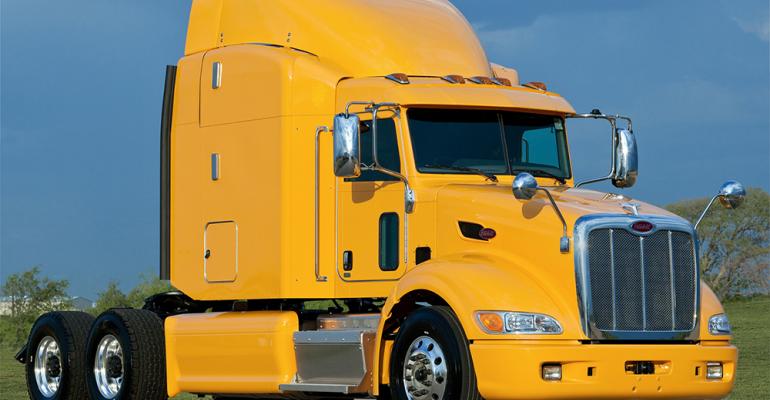DETROIT – The automotive industry would benefit exponentially from harmonized global fuel-economy and tailpipe emissions testing, as well as a flatter playing field when it comes to setting an individual company’s efficiency bogey, experts tell the SAE World Congress.
Known as a drive cycle among engineers, the process for testing the fuel economy and emissions of a vehicle varies by region.
In the U.S., it’s the Federal Test Procedure and in the European Union it’s the New European Drive Cycle. By 2015, Europe and many other countries such as China, India and Japan are expected to shift to the Worldwide Light Vehicle Test Procedure.
The current patchwork of procedures makes designing global cars and trucks difficult, as well as more costly, because some technologies work better under some drive cycles. In other words, an efficiency-gainer necessary to meet regulations in one region may not be needed in another.
“The drive cycle matters,” says Kregg Wiggins, senior vice president-North America powertrain at Continental Automotive.
The disparity is leading many automakers to examine scalable solutions, such as Continental’s 48-Volt Eco Drive system. Shown at last year’s Frankfurt auto show, the system supplements a vehicle’s traditional 12V electrical network with a 48V structure to accommodate various degrees of hybridization. Even the least-demanding mild-hybrid systems can overly tax a 12V network.
Slated for production in 2016, Eco Drive principally applies to stop-start systems, where it delivers efficiency gains of up to 13%, but in many cases it also could take over a number of electrical functions such as climate control, power steering and stability control.
“It helps bridge the gap between a low-voltage hybrid and a high-voltage hybrid,” Wiggins tells a session addressing regulatory-driven impacts on powertrain.
Louis Bailoni, president-Scenaria, a consulting unit of engineering group AVL, agrees there is no “silver bullet” to global regulatory demands and advises automakers to balance the myriad of challenges between market demands and technology availability.
The key, Bailoni offers, is systems integration and optimization, or “getting to that optimal design solution.”
He warns regulations only will become tougher and more complex, while growing consumer wealth will lead buyers to demand greater vehicle efficiency and performance. Weigh the risk of a potential solution, he adds, using “a good execution of the right processes and tools.”
Commercial-Sector Requirements Even Tougher
But if light-vehicle powertrain engineers thought they had headaches, take a turn in R&D in the commercial sector, says Jennifer Rumsey, vice president-engineering, Engine Business, at Cummins.
Rumsey says the on-highway sector uses a wide variety of equipment to perform specific jobs, “making it a complex industry that is difficult to regulate.”
The initial phase of the first comprehensive U.S. program to reduce emissions and fuel consumption of heavy-duty vehicles began this year, and the White House recently authorized work on the program’s second phase.
However, medium- and heavy-duty engine makers such as Cummins have not been standing still awaiting regulation, Rumsey says. In the past 30 years, commercial-vehicle engines have grown 99% cleaner.
More recently, Cummins partnered with suppliers Eaton and Dana, and PACCAR division Peterbilt, to build the SuperTruck. The Class 8 truck boasts an increase to 10.7 mpg (22.0 L/100 km) from an average of roughly 6.5 mpg (36.2 L/100 km) for vehicles currently in the segment. It leverages a 41% improvement in powertrain efficiency and 44% gain in aerodynamics.
Delphi is working on fuel-cell technology for the truck to eliminate idling while drivers are sleeping or resting, for additional emissions reductions.
Cummins and Eaton also recently collaborated on a “smart transmission” for heavy-duty applications. The 10-speed gearbox promises a 3%-6% efficiency gain by sharing critical data with the engine.
“The engine and transmission talk to each other better,” Rumsey says.
Elsewhere on the regulatory front, the U.S. Environmental Protection Agency last month announced Tier 3 standards aimed at reducing emissions from light-, medium- and some heavy-duty vehicles.
The standard, beginning in 2017 and harmonized with California air quality regulations, also importantly reduces the allowable sulfur content of gasoline, says Chris Grundler, director-Office of Transportation and Air Quality at the EPA.
“It will benefit all breathers,” he says.
Regarding current light-vehicle emissions rules, which run through 2016 before even stricter regulations start phasing in the following year, Grundler says automakers are making tremendous progress. An annual report on the topic will be released soon, he says, but already 90 of the available ’13 models from automakers meet or exceed the 2016 emission standards.
“The industry is ahead of the game,” he says.
But Grundler acquiesces when pressed by panelists whether the rules, passed by the EPA and NHTSA in 2012 and set to peak at 54.5 mpg (4.3 L/100 km) by 2025, are fair to OEMs that do not make trucks.
Based on the size of the vehicles a particular automaker sells, the rules tend to favor makers of big pickups and SUVs because those models have a more gradual phase-in. That makes their fleet fuel-economy and emissions targets lower.
“Fairness is dependent on where one sits,” he admits. “At the end of the day, we did the best we could with the data we had.”
Grundler promises work already has begun on the midterm examination regulators cooked into the rules for the 2022-2025 enforcement periods. He says all options remain on the table, including increasing, freezing or reducing the standards.
“It will be a data-driven process and totally transparent,” he says.





